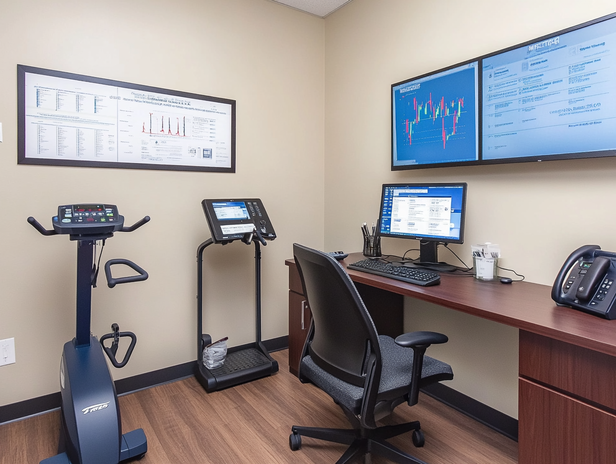How to Start a Gym – A Step-by-Step Guide
Starting a gym can be a fulfilling and profitable venture, especially if you’re passionate about fitness and helping others achieve their health goals. However, like any business, it requires careful planning, knowledge of the industry, and a clear strategy to succeed. This guide will walk you through everything you need to know about how to start a gym, from planning and location selection to marketing and daily operations.
Understanding the Fitness Industry When Learning How to Start a Gym
Before diving into the specifics of opening a gym, it’s essential to understand the broader fitness industry.
The Growth of the Fitness Industry: Insights for How to Start a Gym
The fitness industry has seen significant growth over the past decade, with increasing numbers of people prioritizing health and wellness. Gyms, fitness studios, and health clubs are in high demand as more individuals seek out professional guidance to improve their physical fitness. Understanding this growth and the factors driving it will help you position your gym effectively in the market.
Identifying Market Trends
Staying informed about current trends is crucial when learning how to start a gym. Popular trends include specialized fitness classes, personal training, online fitness options, and a focus on overall wellness, including mental health and nutrition. Incorporating these trends into your business plan can help attract a wider audience.
Developing Your Gym Concept
Creating a unique concept for your gym is essential for standing out in a competitive market.
Choosing Your Niche
Decide what type of gym you want to open. Will it be a general fitness gym, a boutique studio focusing on a specific workout like yoga or spinning, or a luxury gym offering comprehensive wellness services? Defining your niche will help attract a specific demographic and differentiate your gym from competitors.
Creating a Unique Value Proposition
Your unique value proposition (UVP) is what sets your gym apart from others. It could be personalized training programs, state-of-the-art equipment, exclusive classes, or a strong community atmosphere. Clearly defining your UVP will be key in attracting and retaining members.
Planning Your Business
A well-thought-out business plan is critical to the success of your gym.
Conducting Market Research
Conducting thorough market research is vital when starting a gym. Identify your target market, analyze your competition, and determine the demand for fitness services in your area. This research will inform your business decisions and help you identify opportunities for growth.
Choosing the Right Location

Location is crucial to the success of your gym. Look for areas with high foot traffic, easy accessibility, and proximity to your target demographic. Whether you’re in a busy urban center or a suburban neighborhood, the right location can significantly impact your gym’s success.
Creating a Detailed Business Plan
Your business plan should outline your gym’s mission, vision, target market, competitive analysis, marketing strategy, and financial projections. This document will guide your business decisions and is essential if you need to secure financing. Include a breakdown of start-up costs, operational expenses, and revenue projections.
Setting Up Your Gym: Key Steps in How to Start a Gym
Setting up your gym involves selecting the right equipment, designing the space, and ensuring all legal requirements are met.
Designing Your Gym Space

The layout and design of your gym should facilitate a smooth flow of operations while creating an inviting atmosphere for members. Consider different zones for cardio, strength training, group classes, and relaxation areas. Pay attention to lighting, ventilation, and overall aesthetics to enhance the user experience.
Selecting Equipment
Investing in high-quality equipment is crucial for attracting and retaining members. Depending on your niche, you’ll need a mix of cardio machines, weightlifting equipment, and specialized gear for classes. Ensure that your equipment meets safety standards and is appropriate for the types of workouts you plan to offer.
Essential Equipment List:
- Treadmills, stationary bikes, and ellipticals for cardio
- Free weights, weight machines, and benches for strength training
- Mats, resistance bands, and stability balls for functional training
- Specialized equipment for group classes, such as yoga mats, spin bikes, or Pilates reformers
Building Supplier Relationships
Develop relationships with reliable suppliers who can provide equipment, fitness gear, and other essentials at competitive prices. Consider working with local suppliers to support the community and reduce shipping costs.
Navigating Legal and Regulatory Requirements
Complying with legal and regulatory requirements is crucial when starting a gym.
Licenses and Permits
Operating a gym requires various licenses and permits, including a business license, health and safety certifications, and possibly a zoning permit, depending on your location. Research the specific requirements in your area to ensure compliance.
Insurance for Gyms
Insurance is essential to protect your gym from potential liabilities. General liability insurance, property insurance, and workers’ compensation are standard coverages you should consider. Additionally, professional liability insurance is recommended if you offer personal training or fitness classes.
Health and Safety Standards

Gyms must adhere to strict health and safety standards to ensure the well-being of members and staff. This includes maintaining clean facilities, ensuring equipment is safe and in good condition, and training staff in first aid and emergency procedures. Regular inspections and audits can help you stay compliant with regulations.
Hiring and Training Staff
Your staff will play a critical role in the success of your gym.
Recruiting Qualified Trainers and Instructors
Hiring qualified trainers and instructors is essential for delivering high-quality services. Look for professionals with certifications from recognized fitness organizations and a passion for helping others achieve their fitness goals. Your trainers should also align with your gym’s philosophy and be able to create a welcoming environment for all members.
Staff Training and Development
Continuous training and development are vital for maintaining a high standard of service. Provide ongoing education opportunities for your staff, such as workshops, certifications, and access to the latest fitness trends. This not only improves the quality of your services but also helps retain top talent.
Marketing Your Gym

Effective marketing is key to attracting new members and building your gym’s brand.
Building a Strong Brand Identity
Your gym’s brand identity should reflect its values, mission, and unique offerings. This includes your logo, color scheme, interior design, and overall aesthetic. A strong, consistent brand helps build recognition and trust among potential members.
Creating an Online Presence
In today’s digital age, a strong online presence is crucial for any business. Create a professional website that showcases your services, class schedules, membership options, and testimonials. Optimize your site for local search to ensure potential members can find you easily. Additionally, establish profiles on social media platforms like Instagram, Facebook, and LinkedIn to engage with your community and promote your gym.
Local Marketing Strategies
Engage with your local community through targeted marketing strategies. Offer promotions or discounts during your grand opening, participate in local events, or partner with nearby businesses for cross-promotion. Consider offering free trials or discounted memberships to attract new members and build a loyal customer base.
Managing Daily Operations
Running a successful gym requires efficient management and a focus on member satisfaction.
Implementing a Membership Management System
A robust membership management system is essential for tracking member information, managing class schedules, processing payments, and handling communications. This system should integrate with your website and offer features like online booking and automated billing.
Maintaining High Standards of Cleanliness and Safety

Maintaining a clean and safe environment is crucial for member retention. Implement daily cleaning protocols, conduct regular equipment maintenance, and ensure that staff are trained to handle emergencies. Members are more likely to stay loyal to a gym that prioritizes their safety and well-being.
Member Engagement and Retention
Keeping members engaged is key to long-term success. Offer a variety of classes, regular challenges or events, and personalized fitness plans to keep your members motivated. Regularly seek feedback through surveys or one-on-one interactions to understand how you can improve their experience.
Expanding Your Gym
Once your gym is established, you can explore opportunities for growth.
Adding New Services

Consider adding new services to expand your offerings, such as personal training, nutrition counseling, massage therapy, or wellness workshops. These additional services can increase revenue and provide more value to your members.
Opening Additional Locations
If your first gym is successful, you may consider expanding to additional locations. Start by analyzing the performance of your current gym and identifying other areas with similar demographics and demand. Expanding requires careful planning and sufficient capital, so ensure you’re ready for the challenge.
Offering Online Fitness Programs
The rise of online fitness has opened new avenues for growth. Consider offering virtual classes, workout programs, or online coaching to reach a broader audience and create additional revenue streams.
Conclusion

Starting a gym is a rewarding journey that requires passion, planning, and persistence. By understanding the fitness industry, developing a unique concept, and focusing on member satisfaction, you can build a successful gym that helps people achieve their fitness goals. Now that you know how to start a gym, it’s time to put your plan into action and create a thriving fitness community.
FAQs
How much does it cost to start a gym?
Starting a gym typically requires an investment of $100,000 to $500,000, depending on the size, location, and type of gym.
Do I need certifications to start a gym?
While you don’t need personal certifications to start a gym, hiring certified trainers and instructors is essential for providing high-quality services and maintaining member safety.
What are the most important factors in choosing a gym location?
Key factors include visibility, accessibility, proximity to your target demographic, and the availability of parking or public transportation.
How can I attract members to my gym?
Offer free trials, engage in local marketing, build a strong online presence, and create a welcoming atmosphere with high-quality services and facilities.
Can I start a gym with a focus on online fitness?
Yes, starting a gym that also offers online fitness programs or virtual classes can help you reach a broader audience and create additional revenue streams.




